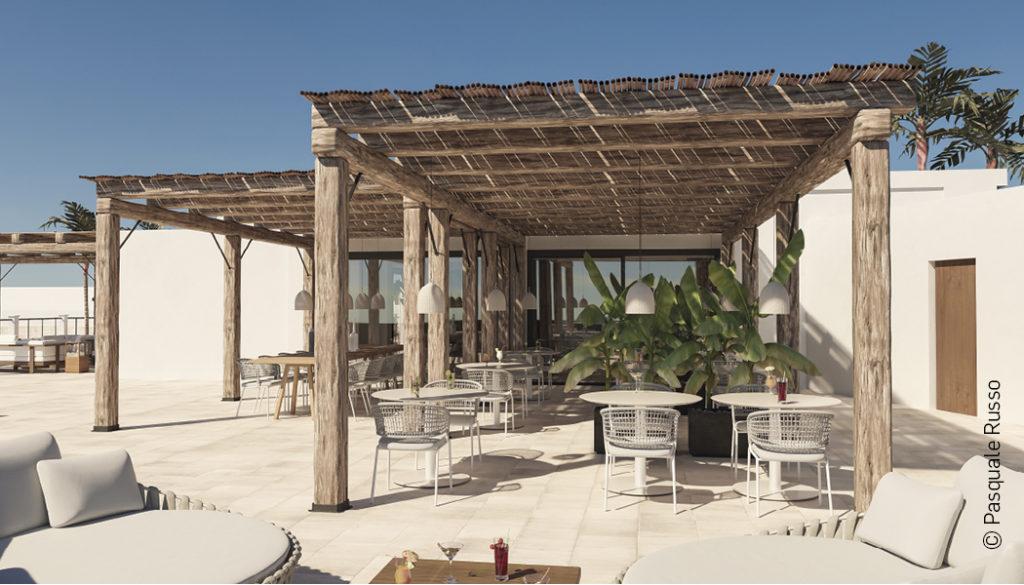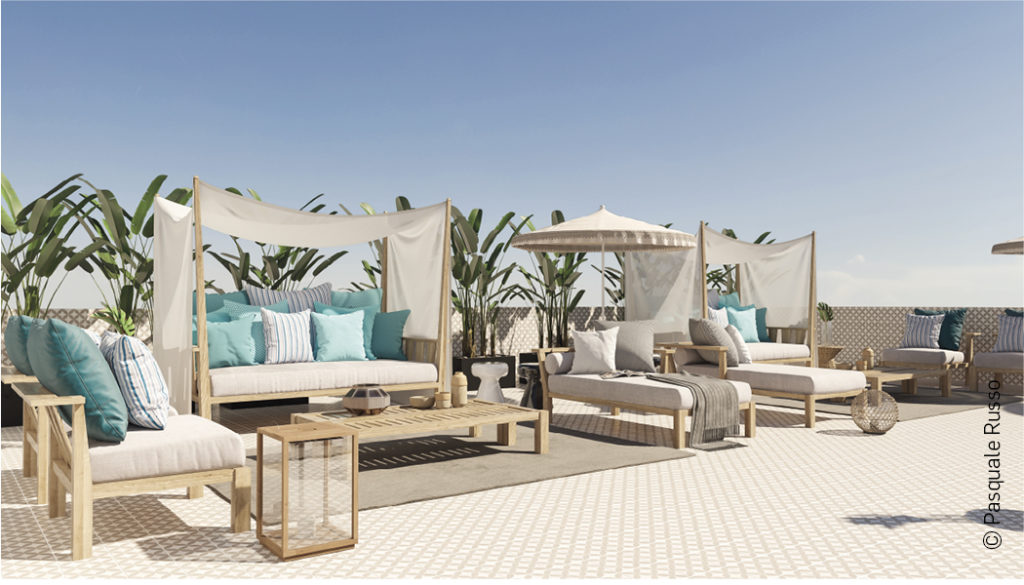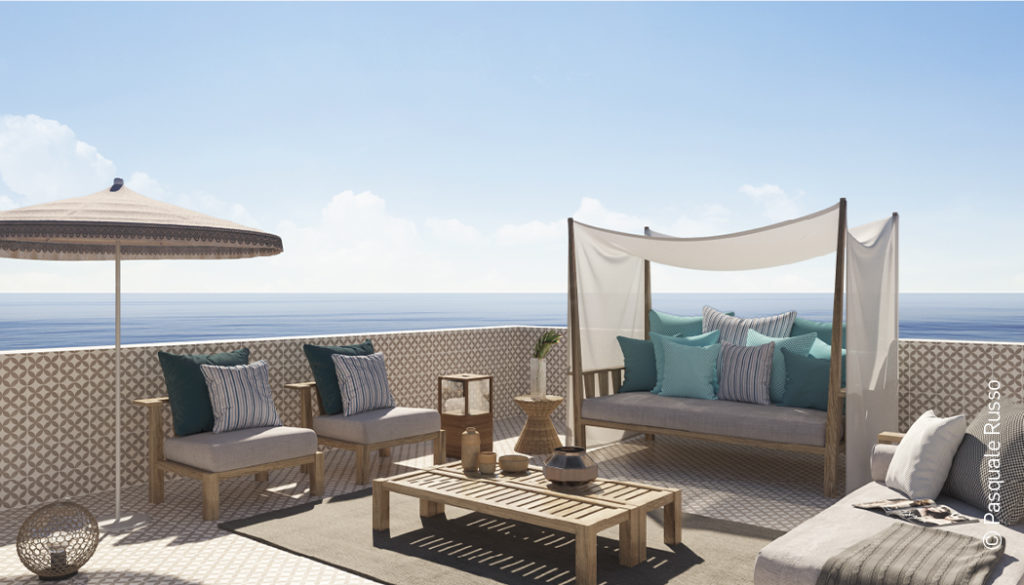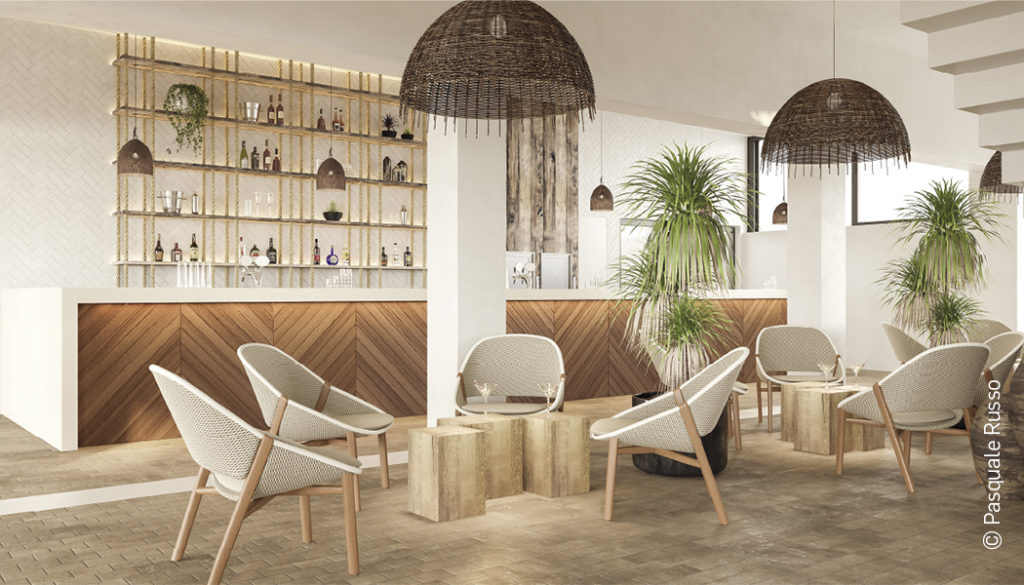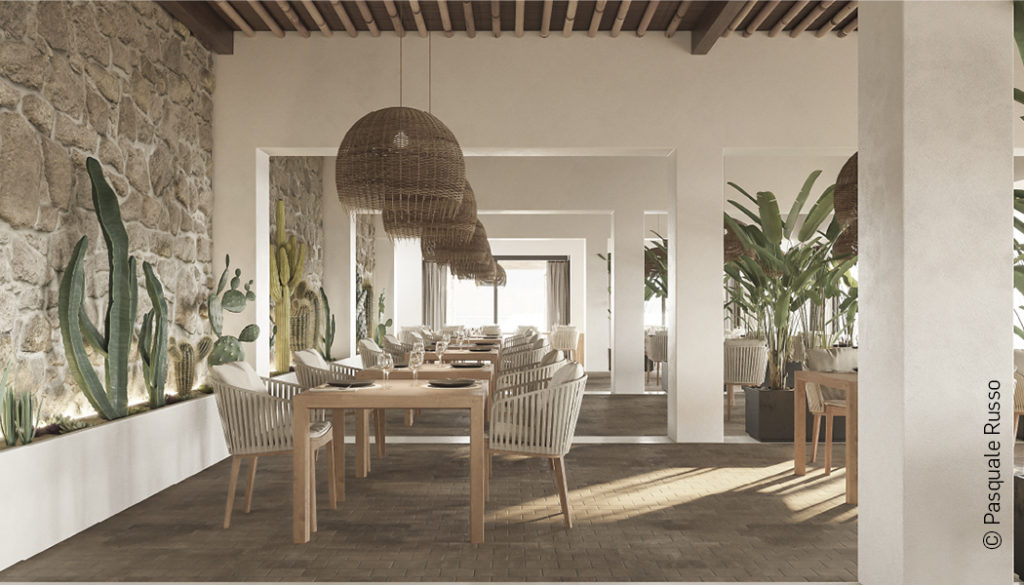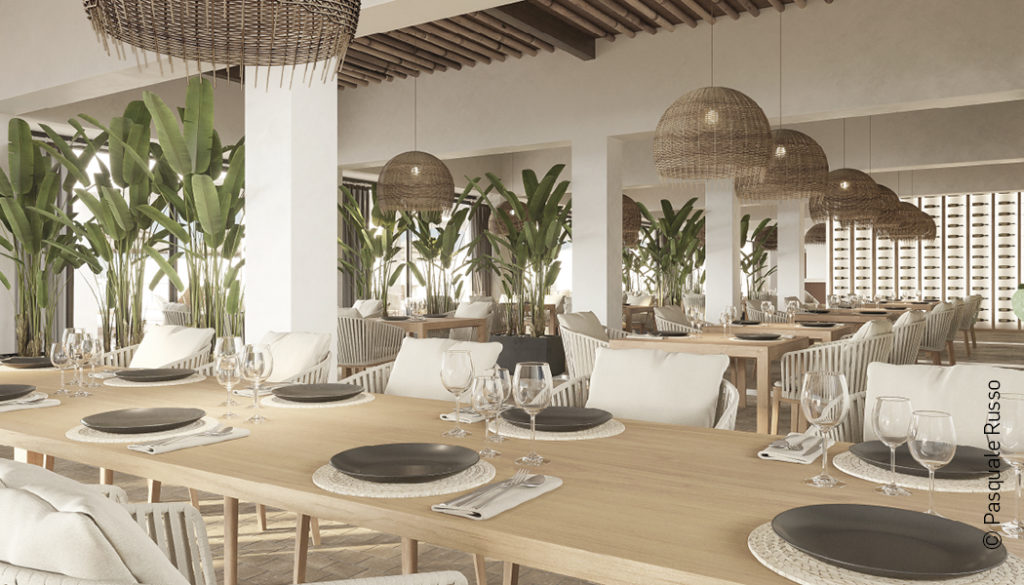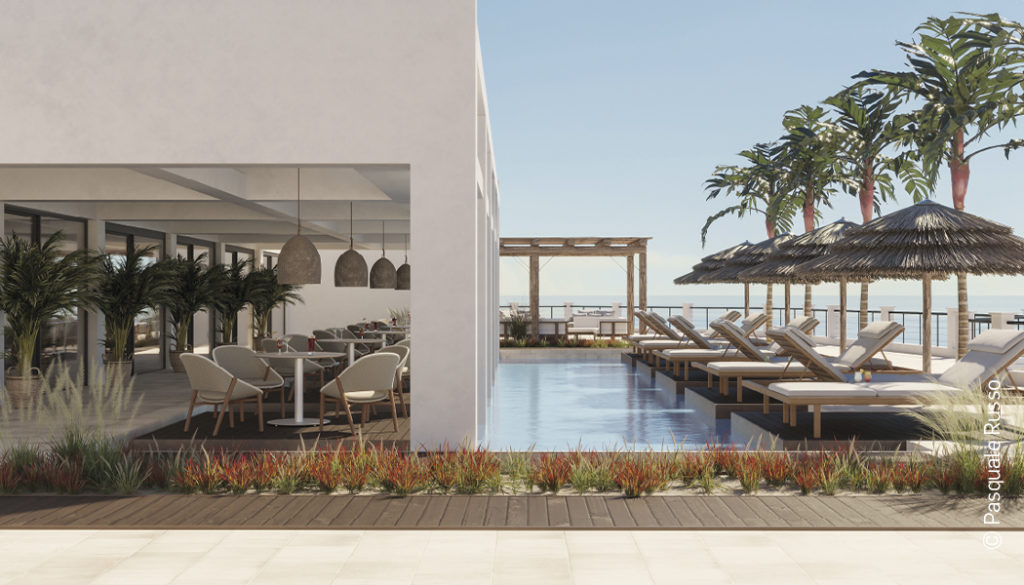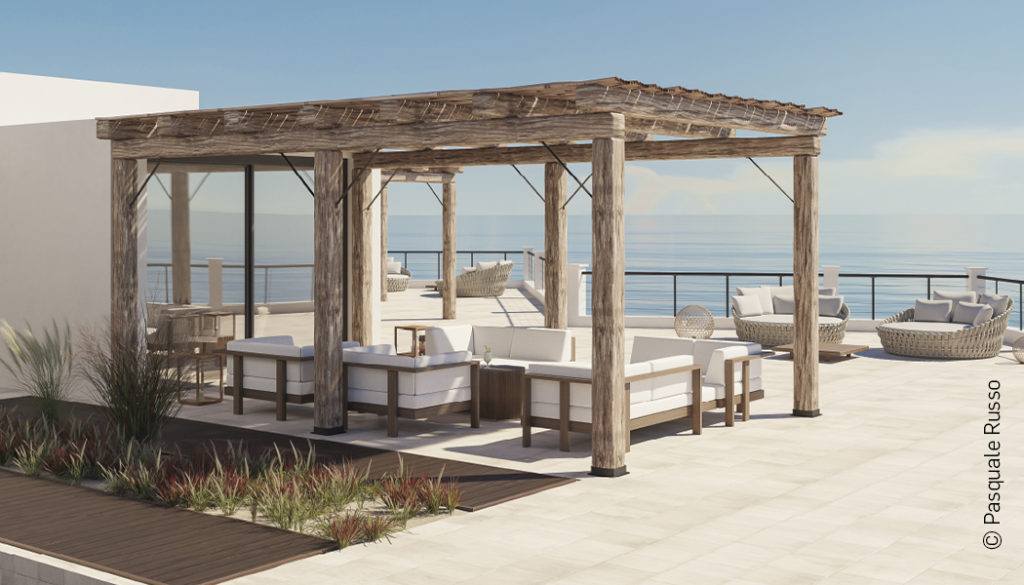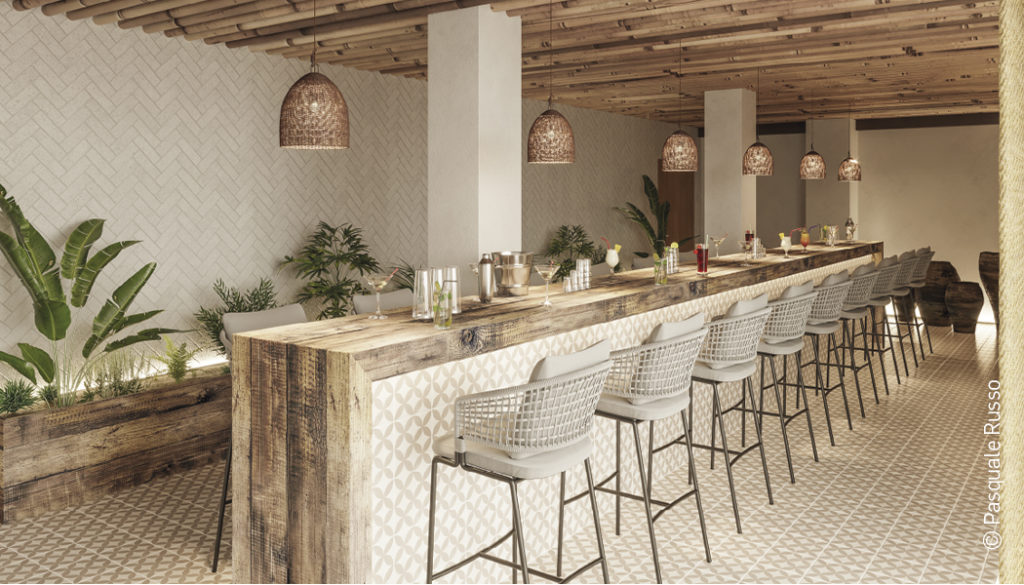“God is in the details” is his mantra. Born in ’95, Apulian, after graduating from art school he obtained a degree in Design at the RUFA – Rome University of Fine Arts. Passionate about photography, graphics, multimedia art, he considers himself a multidisciplinary and eclectic personality.
“I have always had a broad focus and an approach to understanding the world that passes through different disciplines and interests. I let myself be inspired by everything and my works are always contaminated by music, science, nature, traditions, something […] I look for interference everywhere and my biggest goal remains to give an emotional value to each of my projects. Without ever neglecting the aesthetic and functional factor.”
In 2020 he enrolled in the 2nd level course in Multimedia Arts & Design – coordinated by professor and art historian Caterina Tomeo – in RUFA, thus continuing his research towards the “sublime”.
BAHJA – Seafood & Beach Club
The project that celebrates the cult of the sea comes from the desire to redevelop and enhance a stretch of Apulian coast south of Bari.
The renovation has involved, in particular, the building – surrounding area annexed – of the former Lido of the State Police that after forty years of activity remains abandoned. The bathing establishment covers a total area of 3,470 square meters, of which 424 are occupied by the architectural volume.
Inspired by the Mediterranean tradition and the different cultures that have inhabited the area over time, Bahja is a Beach Club characterized by natural tones, warm and enveloping textures and sustainable materials, all surrounded by a pristine blue sea and tropical plants, blending into a sophisticated and refined style that perfectly matches the local archetype.
Aspiring to be an oasis in the desert, the project develops a respectful and minimalist approach, conceptualizing a logic that concerns and preserves the surrounding nature and local traditions, enforcing the separation between the natural and angular context of the cliff and the systematic independence of the architectural structure, thus creating a design experience that celebrates the cult of the beach.

